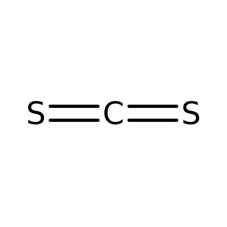 Carbon Disulfide (CS2)?
Carbon Disulfide (CS2)?
Carbon disulfide appears as a clear colorless to light yellow volatile liquid with a strong disagreeable odor.
Uses
Carbon disulfide is used predominantly in the manufacture of rayon, cellophane, and carbon tetrachloride. Carbon disulfide is also used to produce rubber chemicals and pesticides.
Sources & Potential Exposure
Acute (short-term) inhalation exposure of humans to carbon disulfide has caused changes in breathing and chest pains. Nausea, vomiting, dizziness, fatigue, headache, mood changes, lethargy, blurred vision, delirium, and convulsions have also been reported in humans acutely exposed by inhalation. Neurologic effects, including behavioral and neurophysiological changes, have been observed in chronic (long-term) human and animal inhalation studies. Reproductive effects, such as decreased sperm count and menstrual disturbances, have been observed in humans exposed to carbon disulfide by inhalation.
The main route of exposure to this compound is in the workplace. Workers in plants that use carbon disulfide in their manufacturing processes have a high degree of exposure potential. Releases of carbon disulfide from industrial processes are almost exclusively to the air; individuals in proximity to these sites may be exposed. Concentrations of carbon disulfide in urban/suburban areas were measured at about 65 parts per trillion (ppt) and in rural areas at about 41 ppt. Carbon disulfide has been detected in some samples of drinking water. Low amounts of carbon disulfide may be emitted naturally from volcanoes and marshes.
Federal Regulations
EPA has not classified carbon disulfide for human carcinogenicity.

 Americas
Americas Europe
Europe Français
Français Deutsch
Deutsch Italiano
Italiano Español
Español
